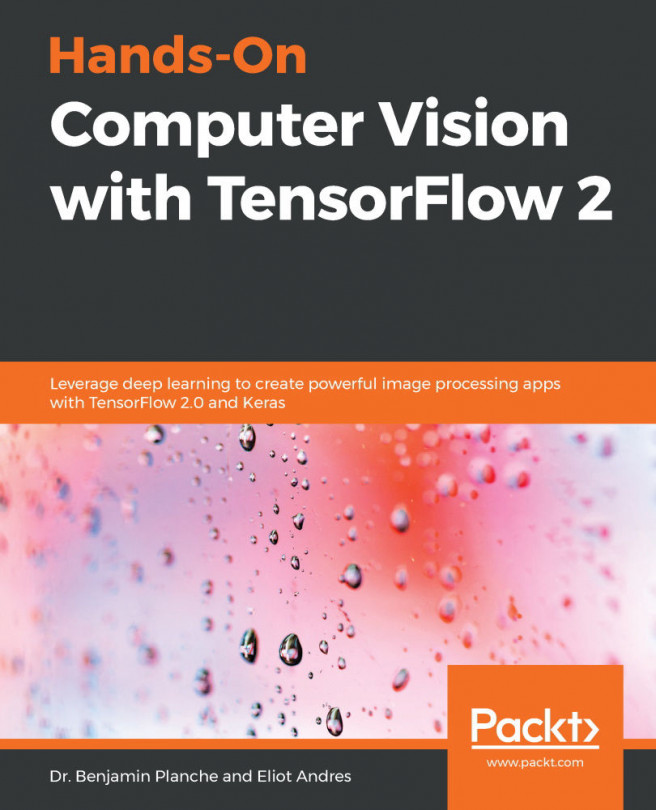Different from object detection, where the goal is to detect objects in rectangular regions, and image classification, which has the purpose of classifying the whole image with a single label, semantic segmentation is a challenging computer vision task, the goal of which is to assign the correct label to every pixel of the input image:

Examples of semantically annotated images from the CityScapes dataset. Every single pixel of the input image has a corresponding pixel-label. (Source: https://www.cityscapes-dataset.com/examples/)
The applications of semantic segmentation are countless, but perhaps the most important ones are in the autonomous driving and medical imaging domains.
Automated guided vehicles and self-driving cars can take advantage of semantic segmentation results, getting a complete understanding of the whole scene captured by the cameras mounted...











































































